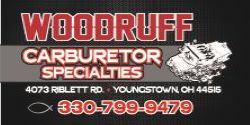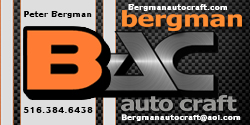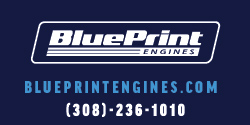I was one of those members that struggled to get within SST specs. It was first-timers learning curve; once I figured it out everything fell into place. You can attempt to drive the TIR down for fun, but it's not necessary. Once the bell is within spec you're good to go. Did you use the RobbMc offset dowels?View attachment 1810162
I know that I'm within required specs (.005), and I'm at .0025, but I may try to get the numbers closer to zero if I can. There are members who have struggled with getting their numbers within specs and have spent a lot of time getting this right, but maybe the stars were just lined up for me.
You are using an out of date browser. It may not display this or other websites correctly.
You should upgrade or use an alternative browser.
You should upgrade or use an alternative browser.
And So It Begins - Tremec TKX Conversion Into A 64 Polara
- Thread starter Charlie Brown
- Start date
Charlie Brown
Well-Known Member
- Local time
- 3:26 AM
- Joined
- May 23, 2021
- Messages
- 312
- Reaction score
- 509
- Location
- Vars, Ontario, Canada
I used SST supplied dowels - identical to RobbMc. The price however, is a lot more expensive for the SST dowels. $79 at SST and $39 at RobbMc. I have been dealing with SST with pedal / clutch master cylinder connection issues and they were shipping me an updated item so I asked them to slip in a set of dowels in the same package. Maybe should have done a bit more homework.I was one of those members that struggled to get within SST specs. It was first-timers learning curve; once I figured it out everything fell into place. You can attempt to drive the TIR down for fun, but it's not necessary. Once the bell is within spec you're good to go. Did you use the RobbMc offset dowels?
savoy64
New Member
We got lucky on mine. Initial final runout was .003. I had a 727 with 3500 turbo-action converter and valve body, trans cooler, etc. 9 inch pppford with.364 gears and 522 stroker. I can now keep up with traffic on the highway( not being constantly passed by yugos, kias, hyundas , you know). My car actually runs 5-10 degrees cooler and is noticeably smoother/less noisy not to mention better fuel mileage. My only complaint about the TKX is that the 2-3 shift is stiff/balky (Ive got about 2000 miles on it, done in May of 2023). Overall I am a happy camper! Like the max wedge oil pan, we used a 6qt E body pan with windage tray. Had to trim the edges of the k member and massage the front passenger side of the pan with an appropriate tool (hammer)! Your pan is rounder at front passenger side than the Ebody pan. I think you will be very happy with the conversion.I received my offset dowels (.007) this week and installed them. First crack on the dial indicator read .005 TIR - so .0025 total run out. View attachment 1810162View attachment 1810163
I know that I'm within required specs (.005), and I'm at .0025, but I may try to get the numbers closer to zero if I can. There are members who have struggled with getting their numbers within specs and have spent a lot of time getting this right, but maybe the stars were just lined up for me.
While I have the trans out, I took the liberty to change out my oil pan from a 4 qt, unbaffled 187 pan to a baffled, 6 qt max wedge pan.
View attachment 1810167View attachment 1810168
Unfortunately, I was unable to keep my windage tray - they don't agree with each other.
As I was installing the new pan, you guessed it, I pulled the threads out of the block on the last pan rail bolt, which also happened to be the hardest one to install (above the cross member). I wasn't going to accept engine removal to fix this, so I was able to install a bolt that was longer than the original and was able the catch enough "good" remaining threads. The last few turns of the socket was a little nerve racking.
My Coronet had a 727 with 3,000 stall converter, with 3.55 gears. Driving on the highway was brutal, buzzing along at 3,500+ rpm just to keep up with traffic in the slow lane. Now, the engine turns 2,000 rpm @ 70 mph. And with the low first gear, the car is much snappier off the line. I'm planning on eventually going up to 3.91 gears.We got lucky on mine. Initial final runout was .003. I had a 727 with 3500 turbo-action converter and valve body, trans cooler, etc. 9 inch pppford with.364 gears and 522 stroker. I can now keep up with traffic on the highway( not being constantly passed by yugos, kias, hyundas , you know).
Got the SST for a better 2-3. The old Keisler balked. Just remember STRAIGHT FORWARD. Forget the H.We got lucky on mine. Initial final runout was .003. I had a 727 with 3500 turbo-action converter and valve body, trans cooler, etc. 9 inch pppford with.364 gears and 522 stroker. I can now keep up with traffic on the highway( not being constantly passed by yugos, kias, hyundas , you know). My car actually runs 5-10 degrees cooler and is noticeably smoother/less noisy not to mention better fuel mileage. My only complaint about the TKX is that the 2-3 shift is stiff/balky (Ive got about 2000 miles on it, done in May of 2023). Overall I am a happy camper! Like the max wedge oil pan, we used a 6qt E body pan with windage tray. Had to trim the edges of the k member and massage the front passenger side of the pan with an appropriate tool (hammer)! Your pan is rounder at front passenger side than the Ebody pan. I think you will be very happy with the conversion.
66 Sat
Well-Known Member
Not sure if you've got the pedals/master cylinder sorted but have you considered the Mal Wood Under Dash Master Cylinder? It's pricey if you've already got the whole kit from SST though.
1962-65 B-BODY MOPAR -Plymouth Satellite Coronet Charger Plymouth GTX – Hydraulic Master Cylinder Clutch Pedal Kit - MalWood USA
I've got this on my car - it makes for a very clean install, just the reservoir in the engine bay (bolted to the brake booster).

1962-65 B-BODY MOPAR -Plymouth Satellite Coronet Charger Plymouth GTX – Hydraulic Master Cylinder Clutch Pedal Kit - MalWood USA
I've got this on my car - it makes for a very clean install, just the reservoir in the engine bay (bolted to the brake booster).
Charlie Brown
Well-Known Member
- Local time
- 3:26 AM
- Joined
- May 23, 2021
- Messages
- 312
- Reaction score
- 509
- Location
- Vars, Ontario, Canada
I think this may be a good option for others contemplating this 5 speed install. I would have considered it if I was not already deep into what I have and components received from SST.Not sure if you've got the pedals/master cylinder sorted but have you considered the Mal Wood Under Dash Master Cylinder? It's pricey if you've already got the whole kit from SST though.
1962-65 B-BODY MOPAR -Plymouth Satellite Coronet Charger Plymouth GTX – Hydraulic Master Cylinder Clutch Pedal Kit - MalWood USA
I've got this on my car - it makes for a very clean install, just the reservoir in the engine bay (bolted to the brake booster).View attachment 1810766
Charlie Brown
Well-Known Member
- Local time
- 3:26 AM
- Joined
- May 23, 2021
- Messages
- 312
- Reaction score
- 509
- Location
- Vars, Ontario, Canada
Alright, I need some schooling on pedal ratios. I understand the basic math. Pedal pivot to pedal, divided by clutch pivot point. Easy enough, but I'm not sure which clutch pivot point to use. Below is a pic of my clutch pedal.
![20250116_183405[1].jpg 20250116_183405[1].jpg](https://www.forbbodiesonly.com/moparforum/attachments/20250116_183405-1-jpg.1810816/)
![20250223_180534[1].jpg 20250223_180534[1].jpg](https://www.forbbodiesonly.com/moparforum/attachments/20250223_180534-1-jpg.1810817/)
The stock clutch connection is at "A". So my question is do I use the 3 1/8 inch measurement or the "B" 2 1/2 inch measurement to calculate my pedal ratio (even though I will connect the clutch rod at "A"). "B" would be at right angles to the pedal and "A" is at an offset angle. I'm confused and I need to get this right.
The stock clutch connection is at "A". So my question is do I use the 3 1/8 inch measurement or the "B" 2 1/2 inch measurement to calculate my pedal ratio (even though I will connect the clutch rod at "A"). "B" would be at right angles to the pedal and "A" is at an offset angle. I'm confused and I need to get this right.
Charlie Brown
Well-Known Member
- Local time
- 3:26 AM
- Joined
- May 23, 2021
- Messages
- 312
- Reaction score
- 509
- Location
- Vars, Ontario, Canada
So, I'm pretty sure I've got the pedal thing sorted out. I have at least 30 hours invested in this, probably more. I've been in and out from under the dash countless times.
I've spent way to much time on this. SST's literature on this says it's a no hassle "perfect fit" install. It's not so far. It seems that the early B Bodies are the bastard child. There is no way that this part of the kit was properly engineered to fit my 64.
Researching the internet, and studying the attached material for reference, I have done my best to resolve my pedal issues. All the material I read, suggest a 6.0 pedal ratio as being optimum.
- https://www.mcleodracing.com/blog/how-to-calculate-pedal-ratio-for-hydraulic-linkage/236
See last images of pedals at bottom of page.
- Clutch linkage math - how to
The first photo in the above link was very helpful.
I've fabricated several templates to assist me. In the end, this is what I've come up with.
I moved the master cylinder as far up as possible on the firewall, just below the brake master cylinder mounting plate. I retained the original supplied master cylinder firewall mounting bracket.
![20250228_173128[1].jpg 20250228_173128[1].jpg](https://www.forbbodiesonly.com/moparforum/attachments/20250228_173128-1-jpg.1816046/)
Next I removed the OEM clutch pedal arm and fabricated my own arm. In the arm I drilled 3 holes at the following radius's from the pivot point - 2.25 inch (6.4 ratio), 2.875 (5.0 ratio) and 3.125 (4.64 ratio). All allow for 1.4 inch master travel.
![20250301_165133[1].jpg 20250301_165133[1].jpg](https://www.forbbodiesonly.com/moparforum/attachments/20250301_165133-1-jpg.1816043/)
Attaching the rod at the 2.25 position (6.4 ratio), results in slight internal bore to piston friction in the last .375 of travel.
Attaching the rod at the 2.875 (5.0 ratio) position, the piston travels freely, without friction / internal interference
Shimming the upper bolt between the firewall adaptor and the master cylinder .225, resulted in changing the master mounted angle. This resulted in being able to use the 2.25 pivot point without friction. This means I am able to use a pedal ratio of 6.4 (preferred) as opposed to 5.0.
I made a beveled adaptor to attach to the firewall mount, .250 thick at the very edge and inserted it between the master and the firewall adaptor. I had to elongate the upper mounting hole in the master to be able to insert the bolt into firewall adaptor. My homemade adaptor slightly skews the bolt angle.
![20250305_111426[1].jpg 20250305_111426[1].jpg](https://www.forbbodiesonly.com/moparforum/attachments/20250305_111426-1-jpg.1816039/)
![20250305_115103[1].jpg 20250305_115103[1].jpg](https://www.forbbodiesonly.com/moparforum/attachments/20250305_115103-1-jpg.1816040/)
![20250305_162741[1].jpg 20250305_162741[1].jpg](https://www.forbbodiesonly.com/moparforum/attachments/20250305_162741-1-jpg.1816041/)
![20250302_112406[1].jpg 20250302_112406[1].jpg](https://www.forbbodiesonly.com/moparforum/attachments/20250302_112406-1-jpg.1816045/)
I now have perfect cylinder bore alignment at the 2.25 attachment, which gives me what I was looking for a pedal ratio of 6.4.
SST did send me a new adaptor which seems to work, but it's very bulky and it hits the brake line junction fitting. It will connect to the factory arm, but the resulting pedal ratio will still be only 4.64 - far from ideal.
![20250223_113139[1].jpg 20250223_113139[1].jpg](https://www.forbbodiesonly.com/moparforum/attachments/20250223_113139-1-jpg.1816059/)
I've spent way to much time on this. SST's literature on this says it's a no hassle "perfect fit" install. It's not so far. It seems that the early B Bodies are the bastard child. There is no way that this part of the kit was properly engineered to fit my 64.
Researching the internet, and studying the attached material for reference, I have done my best to resolve my pedal issues. All the material I read, suggest a 6.0 pedal ratio as being optimum.
- https://www.mcleodracing.com/blog/how-to-calculate-pedal-ratio-for-hydraulic-linkage/236
See last images of pedals at bottom of page.
- Clutch linkage math - how to
The first photo in the above link was very helpful.
I've fabricated several templates to assist me. In the end, this is what I've come up with.
I moved the master cylinder as far up as possible on the firewall, just below the brake master cylinder mounting plate. I retained the original supplied master cylinder firewall mounting bracket.
Next I removed the OEM clutch pedal arm and fabricated my own arm. In the arm I drilled 3 holes at the following radius's from the pivot point - 2.25 inch (6.4 ratio), 2.875 (5.0 ratio) and 3.125 (4.64 ratio). All allow for 1.4 inch master travel.
Attaching the rod at the 2.25 position (6.4 ratio), results in slight internal bore to piston friction in the last .375 of travel.
Attaching the rod at the 2.875 (5.0 ratio) position, the piston travels freely, without friction / internal interference
Shimming the upper bolt between the firewall adaptor and the master cylinder .225, resulted in changing the master mounted angle. This resulted in being able to use the 2.25 pivot point without friction. This means I am able to use a pedal ratio of 6.4 (preferred) as opposed to 5.0.
I made a beveled adaptor to attach to the firewall mount, .250 thick at the very edge and inserted it between the master and the firewall adaptor. I had to elongate the upper mounting hole in the master to be able to insert the bolt into firewall adaptor. My homemade adaptor slightly skews the bolt angle.
I now have perfect cylinder bore alignment at the 2.25 attachment, which gives me what I was looking for a pedal ratio of 6.4.
SST did send me a new adaptor which seems to work, but it's very bulky and it hits the brake line junction fitting. It will connect to the factory arm, but the resulting pedal ratio will still be only 4.64 - far from ideal.
Charlie Brown
Well-Known Member
- Local time
- 3:26 AM
- Joined
- May 23, 2021
- Messages
- 312
- Reaction score
- 509
- Location
- Vars, Ontario, Canada
My next step was to attach the flywheel / clutch assembly to the engine. No problems installing the flywheel, but the clutch was another story. To back up a bit, in the SST supplied instruction material, they make reference to the following -
Mine were not. I re-did the whole process several times, all with the same "no go" result.
In the end, it was the top two bolts that were not seating properly - you know, the ones you can't see at the top. It turns out that TWO of the threaded holes in in flywheel were not threaded properly - look at the crud that came out.
![20250305_131415[1].jpg 20250305_131415[1].jpg](https://www.forbbodiesonly.com/moparforum/attachments/20250305_131415-1-jpg.1816064/)
After chasing all of the threads, the clutch is now installed properly.
![20250305_153005[1].jpg 20250305_153005[1].jpg](https://www.forbbodiesonly.com/moparforum/attachments/20250305_153005-1-jpg.1816066/)
This TKX install is fighting me every step of the way.
I'm hoping the hole I cut in the floor for the shifter will be more forgiving during the trans install.
![20250302_170430[1].jpg 20250302_170430[1].jpg](https://www.forbbodiesonly.com/moparforum/attachments/20250302_170430-1-jpg.1816067/)
MAA-05000 clutch installation instructions
A search of their website does not produce this document. I sent an email to Shane at SST and he sent it to me. Good thing. This is my first clutch install and I needed this document. Contained within is this little nugget - "Once the pressure plate is fully torqued, pay close attention to the pressure plate finger heights. They should all be the same height".Mine were not. I re-did the whole process several times, all with the same "no go" result.
In the end, it was the top two bolts that were not seating properly - you know, the ones you can't see at the top. It turns out that TWO of the threaded holes in in flywheel were not threaded properly - look at the crud that came out.
After chasing all of the threads, the clutch is now installed properly.
This TKX install is fighting me every step of the way.
I'm hoping the hole I cut in the floor for the shifter will be more forgiving during the trans install.
Charlie Brown
Well-Known Member
- Local time
- 3:26 AM
- Joined
- May 23, 2021
- Messages
- 312
- Reaction score
- 509
- Location
- Vars, Ontario, Canada
In preparation for the trans install, I went to my local driveshaft shop to get a trans yoke. I asked for a Spicer unit, but they only had a generic one - I was told it was every bit as strong and identical in all ways. Wrong. When I went to insert the yoke onto the tail shaft of the TKX, it would only slide in about 2 inches and I couldn't figure out why. It looked like it was hitting the inner sleeve/ bushing. I thought that maybe there may be an issue with the trans. But before I dove into the trans, I sourced a Spicer yoke and ---- yes, it slide in. Turns out the Spicer yoke is .003 smaller in diameter. Buyer beware.
Charlie Brown
Well-Known Member
- Local time
- 3:26 AM
- Joined
- May 23, 2021
- Messages
- 312
- Reaction score
- 509
- Location
- Vars, Ontario, Canada
On to the actual trans install. The first attempt failed. It was the proverbial "last 1/2 inch". No matter what I tried, it was a no go. After 3 hours of farting around, I called SST. I talked to Chris, who informed me that the likely reason for this issue was that the trans shaft was not engaging the pilot bushing. Seemed reasonable. I told him that I followed the install instructions to the letter and he confessed that the plastic clutch alignment tool probably had too much slop in it - it could be off a couple of thou, thus my issue. He suggested I could try again and "fiddle" with it a bit. This is not the info I wanted to hear. Clutch bolts have locktite on them and is a pain to clean and do over each time. God knows how many times I might have to do this. He also offered two other suggestions, source a local "metal" alignment tool or use the trans shaft, without the bellhousing, as the alignment tool. I choose to attempt the last. I would like to think that with all the money spent on this kit, that a proper alignment tool would be included, even if it added to the cost. I'm sure most everyone would be happier.
![20250310_180719[1].jpg 20250310_180719[1].jpg](https://www.forbbodiesonly.com/moparforum/attachments/20250310_180719-1-jpg.1820203/)
I then decided to try and install the trans with the bellhousing attached - this was a way easier method. A lot less fooling around with the hydraulic bearing.
On my next attempt to install, the trans slid right up to the block.
![20250313_123231[1].jpg 20250313_123231[1].jpg](https://www.forbbodiesonly.com/moparforum/attachments/20250313_123231-1-jpg.1820208/)
I did however, have to remove the trans several times to get the proper tunnel clearances. In the end, the fourth time was the ticket.
I did have issues with the supplied trans crossmember. It is very flimsy and I had to add reinforcement to it. When the full weight of the trans was on it, it would flex downward.
![20250313_151929[1].jpg 20250313_151929[1].jpg](https://www.forbbodiesonly.com/moparforum/attachments/20250313_151929-1-jpg.1820215/)
![20250313_160410[1].jpg 20250313_160410[1].jpg](https://www.forbbodiesonly.com/moparforum/attachments/20250313_160410-1-jpg.1820216/)
The trans is now installed. A couple of notes. The trans sits a little bit lower in the tunnel than did the auto trans. Driveline angles will have to be adjusted. Because of being lower, my idler arm now kisses one of my header tubes. Time for a light message.
The supplied high pressure clutch line is now too short because the master cylinder is mounted higher on the firewall. Another thing on the to do list. I'll soon be turning my attention to fabricating a removable tunnel cover around the shifter. If it's not removable, the trans won't come out at a later date if necessary.
![20250313_180432[1].jpg 20250313_180432[1].jpg](https://www.forbbodiesonly.com/moparforum/attachments/20250313_180432-1-jpg.1820218/)
I then decided to try and install the trans with the bellhousing attached - this was a way easier method. A lot less fooling around with the hydraulic bearing.
On my next attempt to install, the trans slid right up to the block.
I did however, have to remove the trans several times to get the proper tunnel clearances. In the end, the fourth time was the ticket.
I did have issues with the supplied trans crossmember. It is very flimsy and I had to add reinforcement to it. When the full weight of the trans was on it, it would flex downward.
The trans is now installed. A couple of notes. The trans sits a little bit lower in the tunnel than did the auto trans. Driveline angles will have to be adjusted. Because of being lower, my idler arm now kisses one of my header tubes. Time for a light message.
The supplied high pressure clutch line is now too short because the master cylinder is mounted higher on the firewall. Another thing on the to do list. I'll soon be turning my attention to fabricating a removable tunnel cover around the shifter. If it's not removable, the trans won't come out at a later date if necessary.
ckessel
Well-Known Member
Nothing like field engineering. Great job you're doing.
Charlie Brown
Well-Known Member
- Local time
- 3:26 AM
- Joined
- May 23, 2021
- Messages
- 312
- Reaction score
- 509
- Location
- Vars, Ontario, Canada
Thanks for the compliment. I'm not going to lie and say this journey has been smooth. This install has been fighting every step of the way. I'm sure some of the issues encountered have been me being green in regards to a manual trans install - my first by the way, but I've been wrenching my whole life and do have some experience in this arena. I even had (in my younger days - 1980's) a bracket car that ran on a 9.90 index. It seems that the supplied kit could, with a few tweaks, be a much cleaner and less frustrating install.Nothing like field engineering. Great job you're doing.
Charlie Brown
Well-Known Member
- Local time
- 3:26 AM
- Joined
- May 23, 2021
- Messages
- 312
- Reaction score
- 509
- Location
- Vars, Ontario, Canada
Spent several hours yesterday trying to re-install the drivers side header and starter. Very frustrating experience. The starter location is now bolted to the bellhousing farther out board because of the 11 inch flywheel. Looks like about 1/2 inch or so. The ring gear on the torque convertor has a smaller diameter, hence the different mounting location. There was no way the two items were going to be installed together, so yep, out comes the torsion bar and even then, things barely fit, but they were in. I then started to mess with the wiring for the starter and was not happy with the connections, so I thought I'd take the header out for easier access. Think I could get that blasted header out? Nope. What gives - I got it in but can't take it out? WTF!
I was becoming agitated and frustrated and decided to take a breather and pack it in for the day. I'm normally a very relaxed person, but sometimes......
This whole conversion is more intense then I thought it would be. I knew there would be issues and I thought I did my homework, but like I said before, it's fighting me at every step - and I've still got a long way to go. I hope the end result will be worth it.
I was becoming agitated and frustrated and decided to take a breather and pack it in for the day. I'm normally a very relaxed person, but sometimes......
This whole conversion is more intense then I thought it would be. I knew there would be issues and I thought I did my homework, but like I said before, it's fighting me at every step - and I've still got a long way to go. I hope the end result will be worth it.
ckessel
Well-Known Member
Lessons in patience and winning the battles against inanimate objects. I have fun with that stuff because it's like solving a physical puzzle. Hands on problem solving. When I hit a roadblock or start brain farting, I walk away and tackle it later or the next day.
Belvedere408
Well-Known Member
I've been following along, it's been a hassle. But the end goal will be worth it.
Charlie Brown
Well-Known Member
- Local time
- 3:26 AM
- Joined
- May 23, 2021
- Messages
- 312
- Reaction score
- 509
- Location
- Vars, Ontario, Canada
Turned my attention to patching up the floor where the shifter is. It took about 4 hours to make the appropriate cover plate, but it looks decent and is removable.
![20250318_173415[1].jpg 20250318_173415[1].jpg](https://www.forbbodiesonly.com/moparforum/attachments/20250318_173415-1-jpg.1823204/)
![20250319_125622[1].jpg 20250319_125622[1].jpg](https://www.forbbodiesonly.com/moparforum/attachments/20250319_125622-1-jpg.1823206/)
![20250319_125646[1].jpg 20250319_125646[1].jpg](https://www.forbbodiesonly.com/moparforum/attachments/20250319_125646-1-jpg.1823216/)
![20250319_161052[1].jpg 20250319_161052[1].jpg](https://www.forbbodiesonly.com/moparforum/attachments/20250319_161052-1-jpg.1823222/)
One item that was a bit of a concern is that when shifting into 5th gear, the stick shift shaft would kiss the blower fan knob, At rest there is about a 1/2" clearance, but when shifting it makes contact.
![20250319_160807[1].jpg 20250319_160807[1].jpg](https://www.forbbodiesonly.com/moparforum/attachments/20250319_160807-1-jpg.1823224/)
The solution was to change the control knob from another 64 I had - it's shorter, although of different design - it doesn't match the other dash knobs but I'm ok with this. I also massaged the shaft on the switch to seat the knob a little deeper on the shaft.
![20250319_172908[1].jpg 20250319_172908[1].jpg](https://www.forbbodiesonly.com/moparforum/attachments/20250319_172908-1-jpg.1823226/)
![20250319_172937[1].jpg 20250319_172937[1].jpg](https://www.forbbodiesonly.com/moparforum/attachments/20250319_172937-1-jpg.1823227/)
I'm happy with the result and now have enough clearance.
![20250319_173429[1].jpg 20250319_173429[1].jpg](https://www.forbbodiesonly.com/moparforum/attachments/20250319_173429-1-jpg.1823228/)
One item that was a bit of a concern is that when shifting into 5th gear, the stick shift shaft would kiss the blower fan knob, At rest there is about a 1/2" clearance, but when shifting it makes contact.
The solution was to change the control knob from another 64 I had - it's shorter, although of different design - it doesn't match the other dash knobs but I'm ok with this. I also massaged the shaft on the switch to seat the knob a little deeper on the shaft.
I'm happy with the result and now have enough clearance.
That isn’t the best fitting shift lever. I ended up bending the lever below the boot to the right because it rested against my leg. It needs to be straighter without so much offset.
Charlie Brown
Well-Known Member
- Local time
- 3:26 AM
- Joined
- May 23, 2021
- Messages
- 312
- Reaction score
- 509
- Location
- Vars, Ontario, Canada
I'm going to keep this in mind. I'll see how it works out on my maiden voyage. Thanks.That isn’t the best fitting shift lever. I ended up bending the lever below the boot to the right because it rested against my leg. It needs to be straighter without so much offset.
Similar threads
- Replies
- 1
- Views
- 629
- Replies
- 11
- Views
- 973
- Replies
- 5
- Views
- 767
















